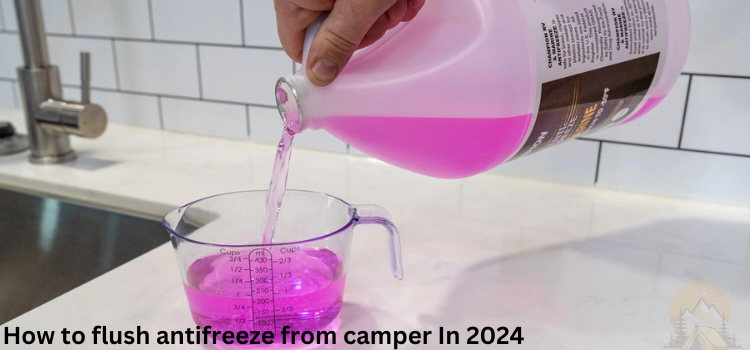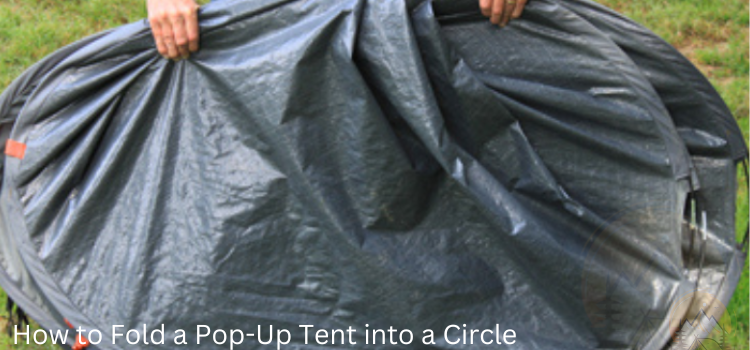Canvas tents have long been favored by outdoor adventurer for their durability, versatility, and timeless appeal. Unlike modern synthetic tents, which are typically made from materials like polyester or nylon, canvas tents are constructed from natural cotton canvas fabric. This rugged material offers a range of benefits that make canvas tents a popular choice for camping, backpacking, and other outdoor activities.
Cleaning a canvas tent may seem difficult at first, but with the right techniques and products, it can be a straightforward process. In this blog article, we’ll guide you through the steps to effectively clean your canvas tent, from preparing the materials to executing the cleaning process. By following these guidelines, you’ll not only keep your canvas tent looking ideal but also ensure it remains a reliable shelter for your outdoor adventures for years to come.

Why it is Important to Clean a Canvas Tent Regularly?
Regular cleaning of your canvas tent is important for several reasons. First and foremost, maintaining cleanliness helps to preserve the integrity of the fabric. Dirt, dust, and debris can allow on the surface of the tent, leading to wear and tear over time. By removing these contaminants through regular cleaning, you can prevent of the canvas material and extend the lifespan of your tent.
Moreover, a clean canvas tent is more hesitate to mold and mildew growth. When left unchecked, mold and mildew can thrive in damp, dirty environments, posing health risks and causing unpleasant odors. By regularly cleaning your tent and ensuring it stays dry, you can minimize the risk of mold and mildew formation, creating a healthier and more pleasant camping experience.
Additionally, keeping your canvas tent clean enhances its overall appearance and functionality. Not only may dirt and stains spoil the look of your tent, but they can also weaken its ability to keep out water.By maintaining a clean and well-maintained tent, you can enjoy a more comfortable and enjoyable outdoor experience while prolonging the life of your investment.
Benefits of cleaning the canvas tent:
Prolongs Lifespan:
Regular cleaning removes dirt, debris, and contaminants that can cause premature wear and tear on the canvas fabric. By preserving the integrity of the material, you can extend the lifespan of your canvas tent and get more use out of it over time.
Prevents Mold and Mildew:
Cleaning helps to eliminate moisture and organic matter that can promote the growth of mold and mildew. By keeping your tent clean and dry, you can reduce the risk of mold and mildew formation, which can cause health issues and unpleasant odors.
Maintains Waterproofing:
Dirt and grime can compromise the waterproofing properties of your canvas tent, leading to leaks and water infiltration during rainy weather. Regular cleaning helps to remove dirt and restore the waterproof coating, ensuring that your tent remains dry and comfortable in wet conditions.
Improves Appearance:
A clean canvas tent not only performs better but also looks better. Removing stains and grime enhances the creativity appeal of your tent, making it more inviting and enjoyable to use for camping trips and outdoor adventures.
Enhances Comfort:
By keeping your canvas tent clean and well-maintained, you can create a more comfortable living environment during your outdoor activities. A clean tent is less likely to harbor odors or pests, providing a more pleasant and enjoyable camping experience for you and your fellow campers.
Understanding the material: How to clean a canvas tent:
Canvas tents stand out from other types of tents primarily due to the material they are made of. Unlike fabricated materials like polyester or nylon commonly used in modern tents, canvas tents are typically constructed from natural cotton canvas. This material offers several unique advantages that set canvas tents apart:
Breathability:
Canvas fabric is highly breathable, allowing air to circulate freely through the tent. This helps to regulate temperature and reduce condensation inside the tent, creating a more comfortable living environment, especially in hot or bad weather conditions.
Durability:
Canvas is known for its exceptional durability and strength, making it well-suited for rugged outdoor use. Canvas tents are more resistant to tears and punctures compared to synthetic tents, providing reliable shelter in harsh environments.
Insulation:
Canvas fabric provides excellent insulation properties, helping to keep the interior of the tent cooler in the summer and warmer in the winter. This natural insulation can help campers stay comfortable throughout the seasons without relying heavily on additional heating or cooling equipment.
Weather Resistance:
Canvas tents are inherently water-resistant, with the tight weave of the fabric naturally repelling water to some extent. Additionally, canvas tents can be treated with waterproof coatings to enhance their water resistance and protect against rain and moisture.
Overall, the unique combination of breathability, durability, insulation, weather resistance, and aesthetic appeal makes canvas tents a popular choice for campers seeking a traditional yet reliable shelter option for their outdoor adventures. Understanding the distinctive qualities of canvas material can help you appreciate the benefits of owning and caring for a canvas tent.
Preparing for cleaning: Gathering necessary supplies and picking the right location:
Before you begin cleaning your canvas tent, it’s important to gather all the necessary supplies and choose an appropriate location for the task. Here’s what you’ll need and how to select the right spot:
Supplies:
Mild detergent or canvas tent cleaner:
Choose a gentle, biodegradable soap specifically formulated for canvas fabric to avoid damaging the material.
Soft-bristled brush or sponge:
Brush with soft bristles or a sponge to avoid scratching or damaging the tent fabric.
Bucket or basin:
Use a clean bucket or basin to mix your cleaning solution and water.
Hose or water source:
You’ll need access to water for rinsing the tent during the cleaning process.
Soft cloth or towel:
Have a soft, absorbent cloth or towel on hand for drying the tent after cleaning.
Location:
Choose an open, well-ventilated area:
Select a spacious outdoor location with plenty of airflow to facilitate drying and prevent mold or mildew growth.
Avoid direct sunlight:
While it’s essential to choose a sunny day for cleaning, avoid exposing the wet canvas tent to direct sunlight for extended periods, as this can cause the fabric to shrink or become damaged.
Level ground:
Ensure the cleaning area is on level ground to prevent water from pooling and causing uneven cleaning or potential damage to the tent.
By gathering all the necessary supplies and selecting an appropriate cleaning location, you’ll be well-prepared to tackle the task of cleaning your canvas tent effectively and safely. Taking these preliminary steps will help ensure a successful cleaning process and preserve the quality and longevity of your tent.
Steps-by-step guide for Cleaning a Canvas Tent:
By following these steps for cleaning your canvas tent, you can effectively remove dirt and debris, refresh the fabric, and ensure your tent is clean and ready for your next outdoor adventure. Taking care to properly prepare, clean, and maintain your canvas tent will help prolong its lifespan and keep it in top condition for years to come.
Preparing the Tent for Cleaning:
Firstly, we discuss how can we preparing the tent for cleaning:
Remove all contents:
Empty the tent of any gear, sleeping bags, and other items.
Open all doors and windows:
Ensure proper ventilation by opening doors and windows to allow air to circulate inside the tent.
Brush off loose dirt:
Use a soft-bristled brush to gently remove any loose dirt, debris, or cobwebs from the exterior and interior of the tent.
Removing Dirt and Debris:
Spot clean stains: Treat any stubborn stains or spots with a mild detergent or canvas tent cleaner. Apply the cleaner directly to the affected areas and gently scrub with a soft brush or sponge.
Sweep or shake out debris:
Turn the tent inside out and shake it vigorously to dislodge any dirt, leaves, or debris trapped in the fabric. Use a broom or brush to sweep away remaining debris.
Washing the Canvas Fabric:
Prepare cleaning solution: In a bucket or basin, mix a small amount of mild detergent or canvas tent cleaner with lukewarm water according to the manufacturer’s instructions.
Wash the tent:
Using a soft-bristled brush or sponge, gently scrub the entire surface of the tent with the cleaning solution. Pay particular attention to areas with stains or heavy soiling.
Rinse thoroughly:
After washing, rinse the tent thoroughly with clean water to remove any soap residue or cleaner. Use a hose or water source with low pressure to avoid damaging the fabric.
Drying and Re-waterproofing the Tent:
Now, secondly we discuss how we do drying and re-waterproofing the tent:
Air dry the tent:
Hang the tent in a shaded, well-ventilated area to air dry completely. Avoid direct sunlight, as prolonged exposure can cause the fabric to shrink or become brittle.
Re-waterproof if necessary:
Once the tent is dry, check the waterproofing integrity of the fabric. If water no longer beads on the surface, reapply a waterproofing treatment according to the manufacturer’s instructions to restore the tent’s water repellency.
Tips for Maintaining and Extending the Life of Your Canvas Tent:
By following these tips for maintaining and caring for your canvas tent, you can ensure that it remains in top condition and continues to provide reliable shelter for your outdoor adventures for years to come. Regular maintenance and proper storage are key to extending the life of your canvas tent and maximizing your enjoyment of outdoor activities.
Proper Storage:
When not in use, store your canvas tent in a cool, dry place away from direct sunlight and moisture. Avoid compressing the tent too tightly, as this can lead to creasing and damage to the fabric. Use a breathable storage bag or cover to protect the tent from dust and debris.
Regular Inspections:
Periodically inspect your canvas tent for signs of wear, tear, or damage. Check seams, zippers, and fabric for any signs of fraying, or ripping. Address any issues promptly to prevent further damage and ensure the longevity of your tent.
Ventilation:
Proper ventilation is essential for maintaining the condition of your canvas tent. When setting up your tent, ensure adequate airflow by opening doors, windows, and vents. This helps to prevent condensation buildup and reduces the risk of mold and mildew growth.
Avoid Harsh Chemicals: When cleaning your canvas tent, use gentle, biodegradable soap or specialized tent cleaners specifically formulated for canvas fabric. Avoid harsh chemicals, bleach, or abrasive cleaners, as these can damage the fabric and compromise its integrity.
Protect from UV Exposure:
Prolonged exposure to ultraviolet (UV) radiation can cause the fabric of your canvas tent to deteriorate over time. Minimize UV damage by setting up your tent in shaded areas whenever possible, and avoid leaving it exposed to direct sunlight for extended periods.
Practice Proper Pitching:
When setting up your tent, choose a level, well-drained site to prevent water pooling and potential damage to the fabric. Avoid pitching your tent near sharp objects or abrasive surfaces that could puncture or abrade the fabric.
Re-waterproof Periodically:
Over time, the waterproofing treatment applied to your canvas tent may wear off. Periodically reapply a waterproofing treatment according to the manufacturer’s instructions to maintain the tent’s water repellency and protect it from moisture.
Alternative Methods for Cleaning a Canvas Tent:
While traditional cleaning methods using mild detergent and water are effective for most canvas tents, there are alternative approaches you can consider for specific cleaning needs or preferences. Here are some alternative methods for cleaning a canvas tent:
Vinegar Solution:
Create a solution of white vinegar and water in a 1:1 ratio. Vinegar is a natural disinfectant and can help remove stubborn stains and odors from canvas fabric. Apply the solution to the affected areas and allow it to sit for a few minutes before rinsing thoroughly with clean water.
Baking Soda Paste:
Mix baking soda with water to create a paste-like consistency. Apply the baking soda paste to stains or spots on the canvas fabric and gently scrub with a soft brush or sponge. Baking soda is effective for lifting dirt and odors and can help brighten the canvas fabric.
Lemon Juice:
Lemon juice is a natural bleaching agent and can be used to lighten stains on canvas fabric. Squeeze fresh lemon juice onto the stained areas and allow it to sit in the sun for several hours. Rinse the fabric thoroughly with water to remove the lemon juice and any remaining stains.
Steam Cleaning:
Use a handheld steam cleaner to gently steam clean the canvas fabric. Steam cleaning can effectively remove dirt, grime, and bacteria from the fabric without the need for harsh chemicals. Be sure to follow the manufacturer’s instructions and avoid applying excessive heat to the fabric.
Professional Cleaning Services:
If you’re hesitant to clean your canvas tent yourself or have particularly stubborn stains or odors, consider hiring a professional cleaning service that specializes in outdoor gear and textiles. Professional cleaners have the expertise and equipment to safely and effectively clean canvas tents without causing damage to the fabric.
Conclusion:
Regular maintenance is important for maintaining a clean and healthy environment. Not only does it help prevent the spread of germs and bacteria, but it also increases the lifespan of our belongings and saves us from costly repairs or replacements. By following these tips for regular maintenance, we can ensure that our homes, workplaces, and other spaces remain clean and safe for ourselves and those around us. So let’s make cleaning a part of our routine to enjoy a happier, healthier life.
FAQS:
What is a good cleaner for canvas?
Spot clean using your preferred stain remover, such as Oxi Booster Pods or Ultra Concentrated Laundry Detergent, if you are working with an especially filthy item. After that, you can give the item a hand wash or use a washing machine.
How do you clean canvas without damaging it?
Use a gentle cloth and soapy water to remove stubborn or oily stains, being careful to squeeze out any extra liquid. Avoid using excessive pressure while cleaning, and move in gently circular motions. We definitely want to avoid using too much force because it can deteriorate the texture of the canvas or even add extra water to the artwork.
Does vinegar damage canvas?
Now that the facts are known, bleach and vinegar are not only harmful to the canvas and caustic, but they are also ineffective. Canvas tents from certain brands mildew more quickly than others.






